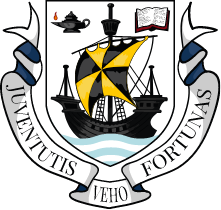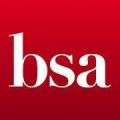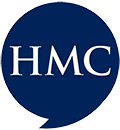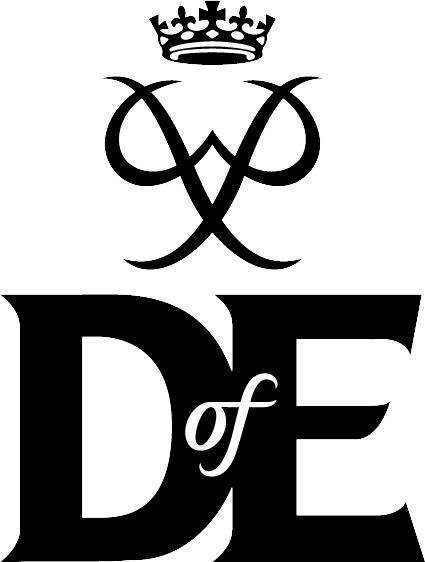Beginnings: Vision for the Future
The school was founded by the Rev. Andrew Mylne, a leading educationalist of his day, following a bequest by Captain John McNabb, a local who was born in 1732 to a poor family, but who made his fortune at sea. McNabb captained, owned and leased out many ships over the decades and it is known that four voyages transported slaves to the West Indies in 1789-91, forty years before the Abolition Act of 1833.
The Founding of Dollar Academy
In 1818, Rev. Mylne was appointed Rector of the new Academy and the top Scottish architect William Playfair was commissioned to design the building. One of the first things to strike visitors arriving at the school is the impressive Doric facade. The grand neo-classical design sets an inspirational tone for pupils and teachers alike. Visitors to Edinburgh’s Royal Scottish Academy or National Galleries might recognise his distinctive style. Playfair also designed the fine houses for teachers and boarders in Academy Place.
Expansion
In 1832 an Infant School was started, accepting children from the age of three. As a result of the school’s growing popularity more accommodation was needed. Several classrooms and a large school hall were added in 1868 and a gymnasium in 1893. The Prep School was built in 1937.
The War Years Sacrifice, Strife and Success
The Academy and its community were no exception to the immense loss suffered as a result of World War I. No fewer than 164 former pupils and staff gave their lives. World War II brought with it further sacrifice, with a total of 76 fatalities.
Between the two wars Dollar was hit by financial difficulties and was temporarily run by the county council. Thanks to the fundraising efforts of former pupils, however, the school was returned to an independent board of governors in May 1934.
The Great Fire
In 1961 a catastrophic fire totally destroyed the interior of the Playfair Building. All the classrooms and the library with its 12,000 books were lost. Locals and staff rallied to help, and teaching continued in the Prep School, Harviestoun Castle, local halls and even in private houses. The inside of the Playfair Building was reconstructed on three floors instead of the original two and finally re-opened in 1966.
Our Return to Independence
The mid 1970’s saw a change in legislation, leading to the phasing out what was known as the ‘Direct Grant’. At the same time Central Regional Council refused to continue the long-standing agreement on fees for Dollar Parish pupils. The Academy’s long-held and hard-earned traditions were too precious to give up, and so the school chose to become completely independent.
It was a decision that helped to make Dollar the institution it is today. Each and every pupil is offered an education that, coupled with our unrivalled range of co-curricular activities, nurtures individual talents, interests and ambitions. The dedication of our teaching staff is demonstrated by their involvement with national governing bodies in roles such as course designers, question setters, verifiers and markers.
Recent History
In recent history, new buildings and facilities have been added to the campus. These include the Games Hall, the Swimming Pool, the Dining Hall, the new Music Department and Auditorium (the Gibson Building), the Computing and Mathematics Centre (the Younger Building) and the Home Economics Centre (the Iona Building).
More recent years have seen the addition of three new science labs, extensions to the Prep School and the opening of the Maguire Building with its facilities for Art, Physical Education and Drama, as well as the circular Captain’s Room for conferences and meetings. The all-weather surface for hockey and tennis saw its first matches in 2009, and all three boarding houses were completely refurbished in 2011. The Westwater Building, home to the Languages Department, was completed in 2015 and is named in honour of one of the five Dollar pupils who died at Gallipoli 100 years earlier.
The Coat of Arms
The school coat of arms (school badge) in its present form was devised by the Lord Lyon King of Arms in 1918. The essential motifs are derived from the clan Campbell coat of arms. Castle Campbell, which still dominates the town and the school, was the lowland seat of the earls and dukes of Argyll, chiefs of clan Campbell, from the 15th to the 19th century.
The school crest has the ship motif of the Campbell Coat of Arms as its centrepiece. In addition, the crest shows the open book of knowledge and the lamp of learning. The crest has come to symbolise much about the Academy – that we are all of one company, that we value education in all its forms, that we collaborate, share common values and are mutually supportive. That sense of togetherness has evolved further into our unofficial motto, below. This, too, is based on an ancient Celtic symbol – the triquetra.
The motto – Juventutis Veho Fortunas – means “I bear the fortunes of youth”.







